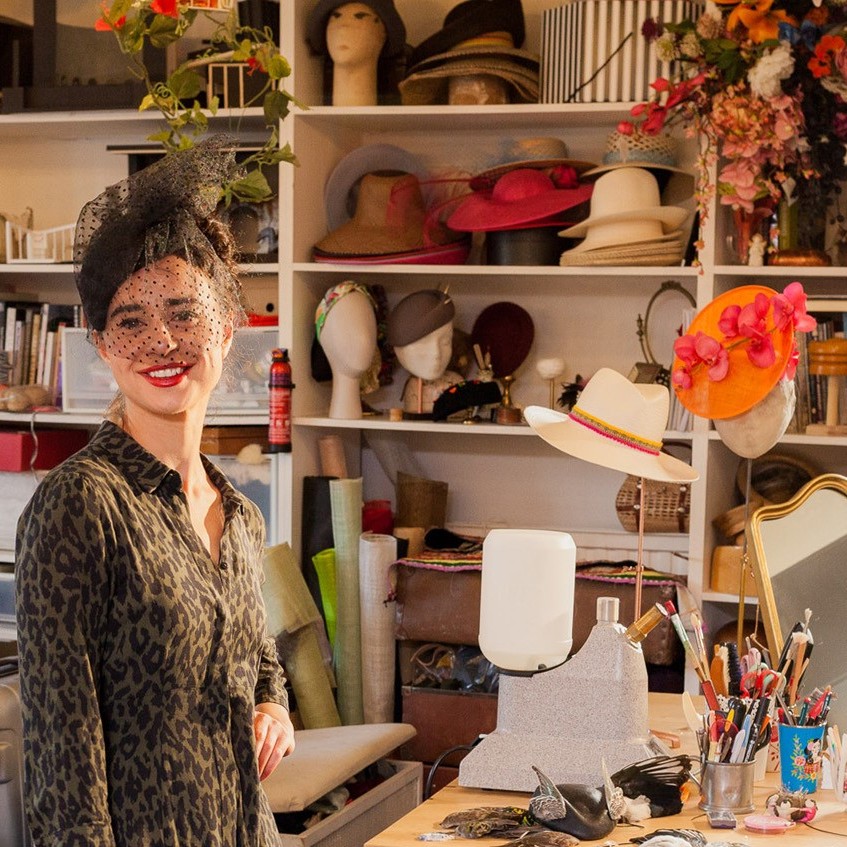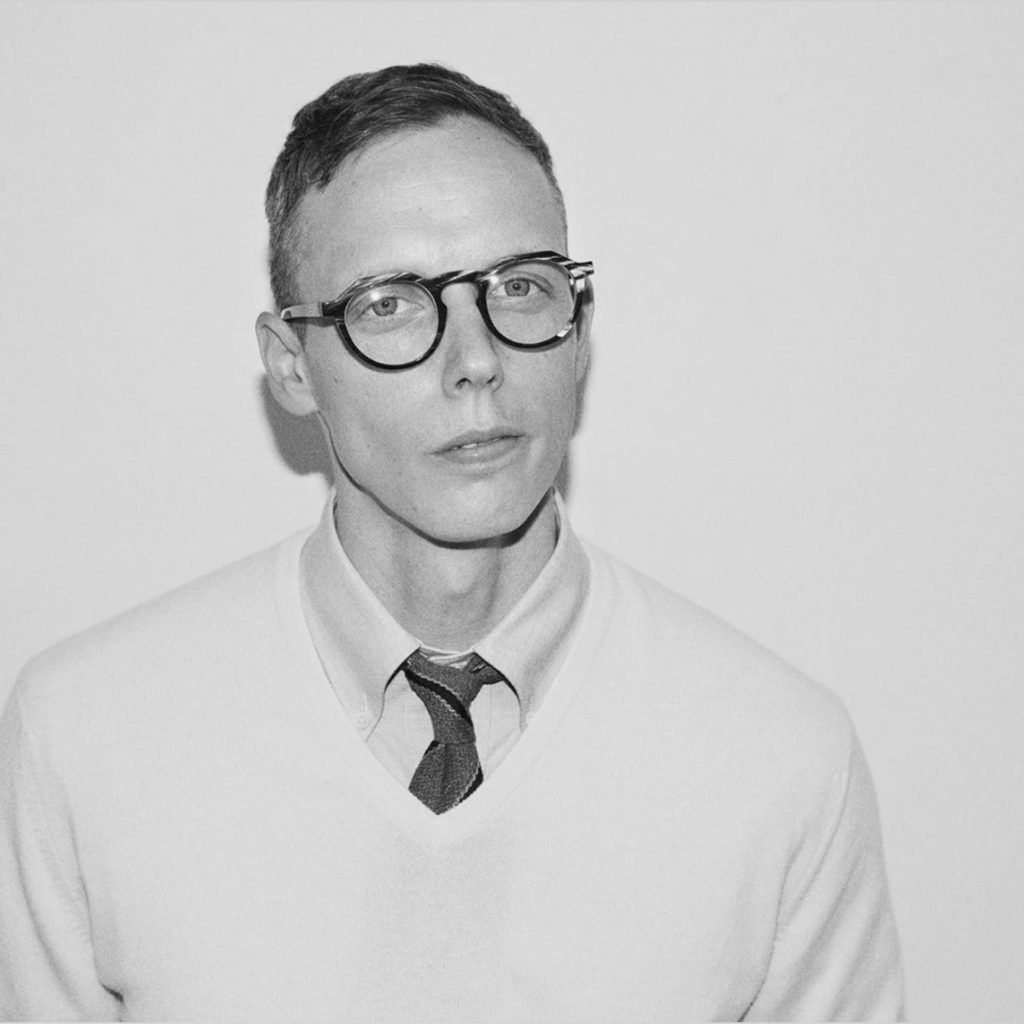Muffy Clark Gill Batik / mixed medium Artist - Florida, USA
Takes the old craft of batik; into contemporary art, giving it an new life.
Zoneone Arts brings Muffy Clark Gill to you…
I first discovered your work through ‘Wash Day: Habana Viejo’. Can you explain….
The technique of this work:
I created this painting on silk using the Japanese resist painting technique known as Rozome. I draw my designs based on my photography onto the silk fabric. I then use a soy/beeswax mixture that is heated and then drawn on the silk with Japanese sheep hair brushes. Acid type dyes that are used to dye Japanese Kimono fabrics are added in layers– working from light to dark. Each color has to be covered with wax in order to preserve the color and drawing.
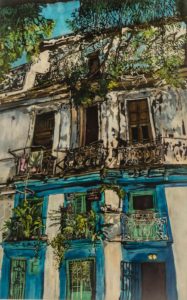
Wash Day:Habana Viejo is rozome on silk 43 x 30 in, framed
General composition:
I zeroed in on a view of an old building in old Havana that had clothing drying from the apartment balcony.
About the location:
I discovered this while walking the streets of Havana, Cuba
You are currently working on a series, ‘Wash Day’, expand on this series?
“Wash Day” comes from a series of photographs of laundry hanging out to dry in places around the world I have visited. I have always enjoyed looking and examining how people wash and dry their household articles. The one thing we all have in common around the world is washing our clothing—the interesting part is seeing the ingenious ways people will dry them! I had been thinking about this series for years and finally decided I had enough images and ideas collected so that I could put together a large body of work. The idea of creating a painting on fabric about fabric is fun! (While camping in Minnesota last week I was even photographing laundry hanging from a camping trailer!)
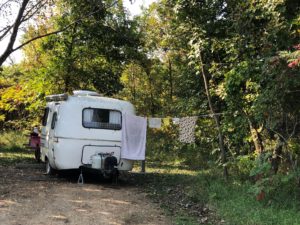
You also have some of your work made into prints: –
Is anything lost in the process?
Sometimes the colors are too saturated and I have to remind my printer to stick to the original image and format I had given them for printing.
What is the edition limit on the prints?
Usually no more than 100
Are all, of your prints numbered and signed?
Some of them are, but my current series featuring sea life is open ended.
Since the Wash Day series is so new, I haven’t yet decided if I will create reproduction images—if I do they will be numbered.
Discuss how you have connected the ancient art of batik with modern art techniques.
I enjoy using modern supplies such as soy wax and processed silk but rendering my artwork with ancient style tools: brushes, Tjaps, and Tjantings.
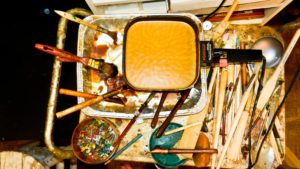 My tools of the trade
My tools of the trade
Briefly discuss your timeline with Batik art.
I originally got interested in Batik art back when I was in high school. My mother and her friend took me along with them on a trip to Uganda to visit our friend’s family, who was stationed there working in a cancer clinic. Our friend’s daughter took us to see an exhibition of arts and crafts created in batik. I was so excited about it that I went home and experimented with crayon batik with my Girl Scout troop and continued working off and on with it over the years. I really started making it my primary medium over twenty years ago. I started working more in the rozome(Japanese wax resist) method after I took workshops with artist Kiranada Sterling Benjamin in 2014.
Expand on your Florida Tribes series.
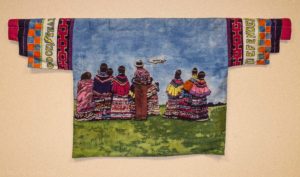
“Defender View” rozome on silk 27 x 61 in
I started creating paintings of our local Native Americans, the Seminole and Miccosukee tribes of Florida after attending Pow-wows in the late 1990’s. I then became interested in the historical aspects of these tribes and started collecting images of them from various state and local archives and translating them into batik paintings. I especially like my hanging shirts images—they were derived from Japanese Kimonos and created as stylized modern day men’s Seminole jackets. I first started creating a body of work in this series back in 2006. I had my first exhibition of the finished work in 2012. Since then I have showed them in museums and galleries around the eastern US. I will be having another four-month exhibition of the series at the Naples (FL) Depot Museum from January through April 2019.
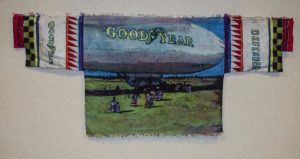
“1929 Defender” rozome on silk 27 x 61 in
Discuss your thoughts on the importance of the role of an artist in keeping history alive.
Over the years before there was photography, it was the role of the artist to record the world around them. These paintings and drawings helped describe people, places and things that we will never see again. In my American Native Series working from archival images is preserving the world that these people once knew so that we can still appreciate them.
Take two works that have led you onto new pathways and explain how this has happened?
“Agua XVI: Ripple” and “Wash Day: St. Lucia”have sent me in different directions.
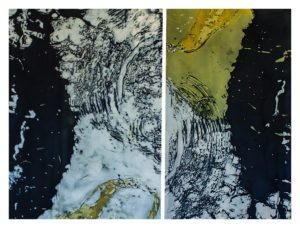
Agua XVI: “Ripple” rozome on silk 33.5 x 42 in
“Ripple” is an abstracted view of two photographs I had taken of a manatee breaking the water’s surface at a wildlife sanctuary in Florida and arranged as a diptych. The painting led me to creating more work abstracting subjects that happen right in front of us.
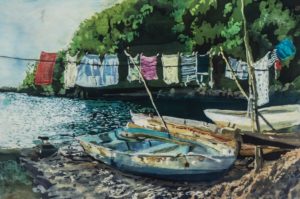
“Wash Day: St. Lucia” rozome on silk 26 x 34 in
“Wash Day: St. Lucia” was an experiment in seeing how I could recapture the setting sun in dye as it hit the boats on the beach with the clothesline hanging above them. It challenged me to look at how sunlight can affect clothing.
Discuss water in your work.
I grew up on a lake in New Jersey for over 18 years. Living on the lake really influenced my life—I love to swim, boat and observe animals and objects that need to thrive upon water. I now look at anything related to water or has water in it (Air, sea, and sky) and how I will describe it visually. The result is a body of work that is more abstract in nature than my American Native series.
You have recently returned from a road trip explain how you…
Record on the road
I kept a daily journal using Evernote so that I can write my impressions and match them up with the photographs I took that day. I also have a “One Sketch a Day” Diary. If an image really speaks to me from my photographs I recreate it either by doing a watercolour drawing or by drawing on my iPad or using the Procreate program with my Apple pencil.
Record and file on your return
Most of my photographs were taken using my iPhone. I then go through my photo files and sort the ones into albums after I mark my favorites and keyword the others so I can easily find them.
What immediately came from this trip.
I created three new pieces in rozome using the Katazome (Japanese stencil) process.
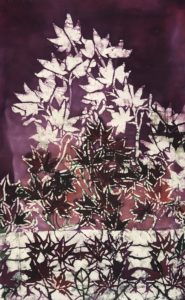
“Japanese Maples” rozome on silk
and at least ten watercolor sketches.
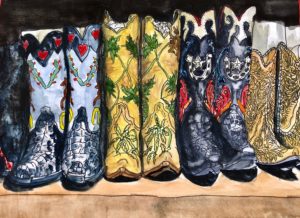
“These Boots Are Made For Showin’” watercolor sketch 7 x 10 in
I also worked on illustrations for a friend’s children’s book. I went back into the studio immediately afterwards and finished several small works for show and sell as well as starting another large painting in the “Wash Day” series.
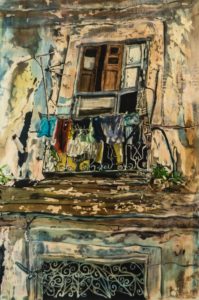
“Wash Day: Havana” rozome on silk 38 x 26 in
Discuss the importance of leaving your studio for inspiration.
I can only stay in my studio space for so long. My new studio space is an old house with low ceilings and is hard to keep cool in the summer Florida heat. I really love to travel and recreate my travels in wax and dye as memories from my experiences.
Contact details:
Muffy Clark Gill, Florida, USA
muffyclarkgill.com
Think a colleague or friend could benefit from this interview?
Knowledge is one of the biggest assets in any business. So why not forward this on to your friends and colleagues so they too can start taking advantage of the insightful information the artist has given?
Other artists you may be interested in:



